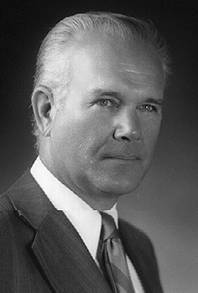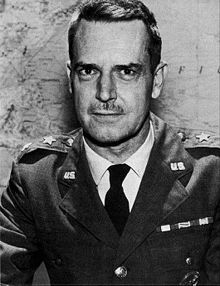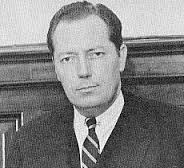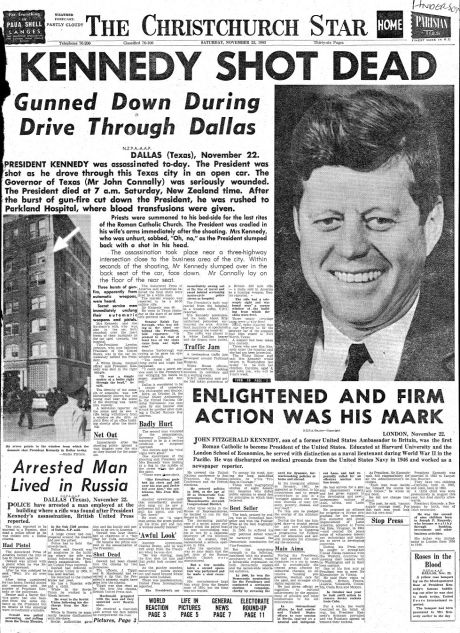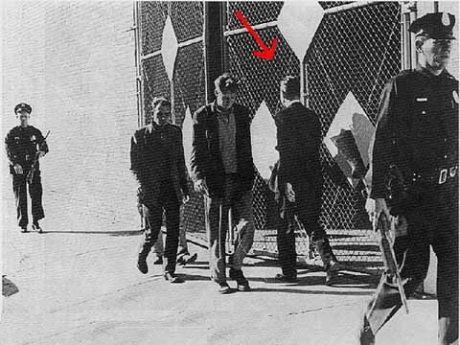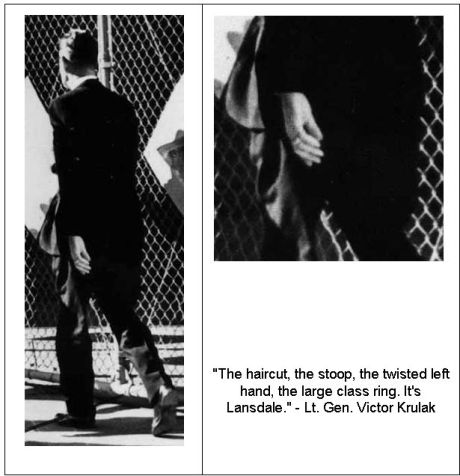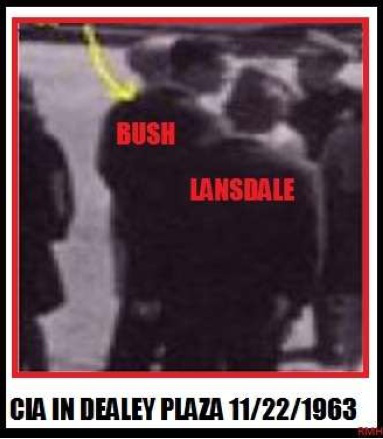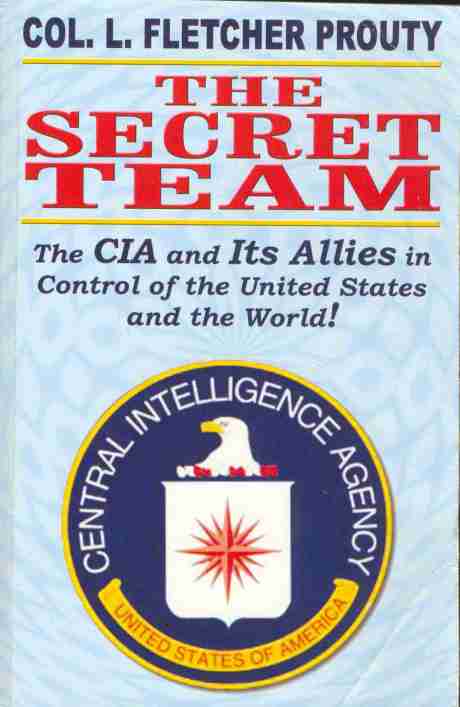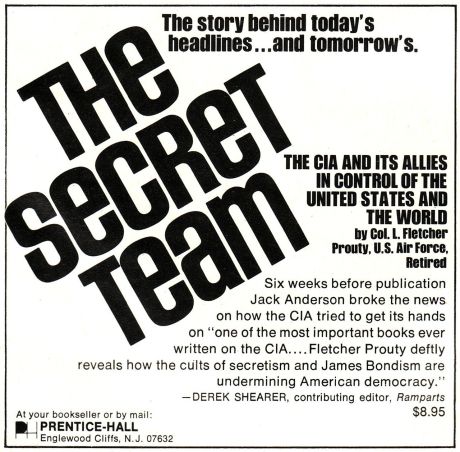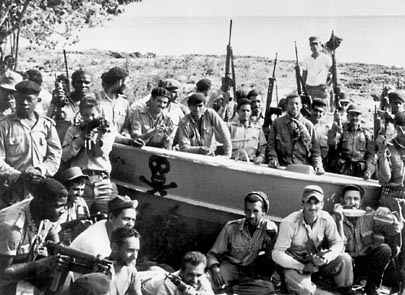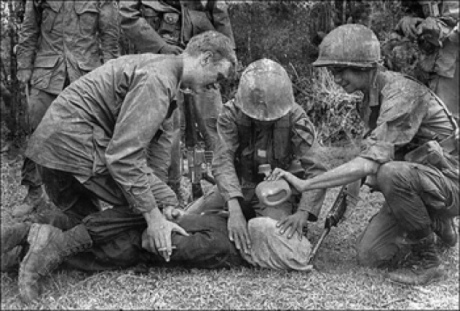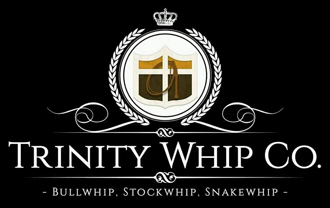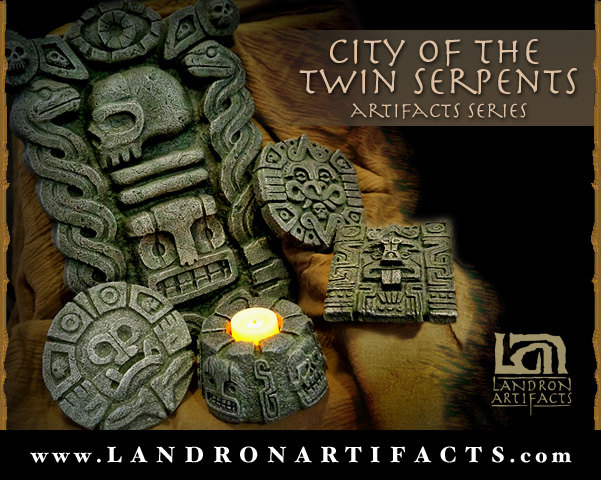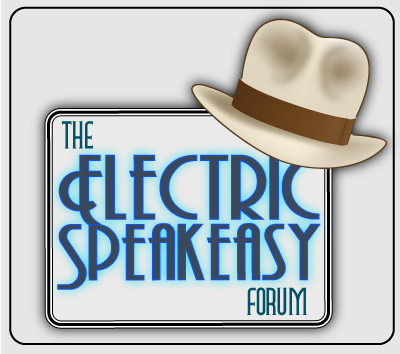
L. Fletcher Prouty’s Letter to Jim Garrison with Background
Leon Fletcher Prouty was an Army tank commander in WWII, and then joined the Air Force and was assigned to the Office of Strategic Services (OSS), the predecessor to the CIA.
In 1955, Prouty was assigned to create an Office of Special Operations (OSO) within the US Air Force headquarters, under provisions of National Security Council Directive 5412 (March 15, 1954) to provide “Air Force support of the clandestine activities of the CIA”. That directive defined “covert operations” as “all activities conducted pursuant to this directive that are so planned and executed that any US government responsibility for them is not evident to unauthorized persons and that, if uncovered, the US government can plausibly disclaim any responsibility for them.” This was the origin of the concept of “plausible deniability”.
Prouty was the Senior Air Force officer with the Office of Special Operations for the Secretary of Defense and later Chief of Special Operations in the Office of the Joint Chiefs in the Pentagon from 1962 through 1963, in charge of military support for CIA covert operations.
As Special Operations Chief, Prouty secured two naval vessels for a covert Operation Zapata invasion of Cuba by CIA-trained Cuban exiles, had them repainted in non-Navy colors at an inactive naval base in North Carolina, and named the two landing craft “Barbara” and “Houston” (at the time when future president GHW Bush owned Zapata Offshore, based in Houston and was married to Barbara, but claimed he had no connection to the CIA).
After his retirement from the military and government work in 1964, Prouty became an outspoken critic of the CIA’s covert activities. He stated that the June 28, 1961 signing by JFK of National Security Action Memoranda 55, 56 & 57 “stripped the CIA of its cherished covert operations role, except for small actions [and] the military-industrial complex was not pleased.”
Prouty also said that, when JFK signed National Security Action Memorandum 263 on Oct 11 1963 – an order for the immediate withdrawal of 1,000 US military advisers from Vietnam and a timetable for complete withdrawal of all US personnel, including CIA operatives, by the end of 1965 – “he signed his own death warrant”.
In 1973, Prouty published his book The Secret Team, in which he claimed that the CIA had worked on behalf of the interests of a “high cabal” of industrialists and bankers. Prouty believed that the Executive Action Program (program for the assassination of heads of state) had also been used in the killing of President John F. Kennedy. Prouty even named Major General and CIA operative Edward Lansdale as the leader of the operation. He claimed Lansdale was in Dallas on the day of the assassination: “He was there like the orchestra leader, coordinating these things.”
Major General Edward Lansdale had been involved with OSS and CIA, and was the head of Operation Mongoose, the highly covert CIA-led program to undermine Fidel Castro’s leadership, incite an uprising against Castro, or kill him. When JKF tried to restrain the Mongoose operation, it continued to act outside of presidential authority, in an attempt to force JFK into military action against Cuba and, of necessity, against the Soviet Union.
In fact, it was the ongoing Operation Mongoose which led Khrushchev to move nuclear missiles to Cuba to pre-empt a likely invasion by the US, which resulted in the Cuban Missile Crisis, which brought the world closer to all-out nuclear war than it had ever been before or since.
What follows is a (somewhat shortened) letter written by L. Fletcher Prouty to Jim Garrison in 1990. Jim Garrison fought in Europe in the US Army in WWII, worked for the FBI for a couple of years and then returned to New Orleans where he was elected District Attorney and became famous for fighting corruption at all levels. The full letter is available here.
Garrison began investigating the JFK assassination in 1966 and in 1969 he prosecuted (unsuccessfully) the only criminal trial of JFK assassination conspirators. Some of his key witnesses suddenly died under mysterious circumstances just before testimony, and Garrison’s reputation was savaged for his efforts.
March 6, 1990
Dear Jim,
I had known Ed [Lansdale*] since 1952 in the Philippines. And Lansdale was “King Maker” of the Philippines.
[* Maj. Gen. Lansdale was an officer of the OSS and later CIA, involved in Operation Mongoose to kill Castro and later the Vietnam pacification program.]
He had arrived in Manila in Sept 1945, after the war was over, for a while. He had been sent back there in 1950 by the CIA to create a new leader of the Philippines and to get rid of Querino.
From 1950 to Feb. 1953 the Director of Central Intelligence was Eisenhower’s old Chief of Staff, Gen Walter Bedell Smith. Smith had been Ambassador to Moscow from 1946 to 1949. The lesser guys in the CIA at the time were Allen Dulles, who was Deputy Director Central Intelligence from Aug. 1951 to Feb. 1953. Frank Wisner became the Deputy Director, Plans (Clandestine Activities) when Dulles became DDCI. Lansdale had to have received his orders from among these four men: Truman, Smith, Dulles, and Wisner.
Lansdale operated with abandon in the Philippines. The Ambassador and the CIA Station Chief, George Aurell, did not know what he was doing. They believed he was some sort of kook Air Force Officer there…a role Lansdale played to the hilt. Magsaysay became President, Dec 30, 1953.
Ed told me many a time how he operated in the Philippines. He said, “All I had was a blank checkbook signed by the U.S. government”. He made friends with many influential Filipinos.
Lansdale’s greatest strategy was to create the “HUKS” as the enemy and to make Magsaysay the “Huk Killer” [the Hukbalahap movement was peasant farmers fighting for land-reform in the Philippines]. He would take Magsaysay’s battalion out into a “Huk” infested area. He would use movies and “battlefield” sound systems, i.e. fireworks to scare the poor natives. Then one-half of Magsaysay’s battalion, dressed as natives, would “attack” the village at night. They’d fire into the air and burn some shacks. In the morning the other half, in uniform, would attack and “capture” the “Huks”. They would bind them up in front of the natives who crept back from the forests, and even have a “firing” squad “kill” some of them. Then they would have Magsaysay make a big speech to the people and the whole battalion would roll down the road to have breakfast together somewhere…ready for the next “show”.
Ed would always see that someone had arranged to have newsmen and camera men there and Magsaysay soon became a national hero. This was a tough game and Ed bragged that a lot of people were killed; but in the end Magsaysay became the “elected” President and Querino was ousted “legally.”
This formula endeared Ed to Allen Dulles. In 1954 Dulles established the Saigon Military Mission in Vietnam…counter to Eisenhower’s orders. He had the French accept Lansdale as its chief. This mission was not in Saigon. It was not military, and its job was subversion in Vietnam. Its biggest job was that it got more than 1,100,000 northern Vietnamese to move south. 660,000 by U.S. Navy ships and the rest by CIA airline planes. These 1,100,000 North Vietnamese became the “subversive” element in South Vietnam and the principal cause of the war-making.
I have heard him brag about capturing random Vietnamese and putting them in a Helicopter. Then they would work on them to make them “confess” to being Viet Minh. When they would not, they would toss them out of the chopper, one after the other, until the last ones talked. This was Ed’s idea of fun…as related to me many times. Then Dulles, Adm. Radford and Cardinal Spellman set up Ngo Dinh Diem. He and his brother, Nhu, became Lansdale protégés.
At about 1957 Lansdale was brought back to Washington and assigned to Air Force Headquarters in a Plans office near mine. He was a fish out of water. He didn’t know Air Force people and Air Force ways. After about six months of that, Dulles got the Office of Special Operations under General Erskine to ask for Lansdale to work for the Secretary of Defense.
By 1960 Erskine had me head the Air Force shop there. He had an Army shop and a Navy shop and we were responsible for all CIA relationships as well as for the National Security Agency. Ed was still out of his element because he did not know the services; but the CIA sent work his way.
Then in the Fall of 1960 something happened that fired him up. Kennedy was elected over Nixon. Right away Lansdale figured out what he was going to do with the new President. Overnight he left for Saigon to see Diem and to set up a deal that would make him, Lansdale, Ambassador to Vietnam.
Ed came back just before the Inauguration and was brought into the White House for a long presentation to Kennedy about Vietnam. Kennedy was taken by it and promised he would have Lansdale back in Vietnam “in a high office”. Ed told us in OSO he had the Ambassadorship sewed up. He lived for that job.
He had not reckoned with some of JFK’s inner staff, George Ball, etc. Finally the whole thing turned around and month by month Lansdale’s star sank over the horizon. Erskine retired and his whole shop was scattered. The Navy men went back to the Navy as did the Army folks. Gen Wheeler in the JCS asked to have me assigned to the Joint Staff. This wiped out the whole Erskine (Office of Special Operations) office. It was comical. There was Lansdale up there all by himself with no office and no one else. He boiled and he blamed it on Kennedy for not giving him the “promised” Ambassadorship to let him “save” Vietnam.
Then with the failure of the Bay of Pigs, caused by that phone call to cancel the air strikes by McGeorge Bundy, the military was given the job of reconstituting some sort of Anti-Castro operation. It was headed by an Army Colonel; but somehow Lansdale (most likely CIA influence) got put into the plans for Operation Mongoose…to get Castro…ostensibly.
The U.S. Army has a think-tank at American University. It was called “Operation Camelot”. This is where the “Camelot” concept came from. It was anti-JFK’s Vietnam strategy. The men running it were Lansdale types, Special Forces background. “Camelot” was King Arthur and Knights of the Round Table: not JFK…then.
Through 1962 and 1963, Mongoose and “Camelot” became strong and silent organizations dedicated to countering JFK. Mongoose had access to the CIA’s best “hit men” in the business and a lot of “strike” capability. Lansdale had many old friends in the media business such as Joe Alsop, Henry Luce [publisher of Time, Life and Fortune magazines] among others. With this background and with his poisoned motivation, I am positive that he got collateral orders to manage the Dallas event under the guise of “getting” Castro. It is so simple at that level. A nod from the right place, source immaterial, and the job’s done.
The “hit” is the easy part. The “escape” must be quick and professional. The cover-up and the scenario are the big jobs. They more than anything else prove the Lansdale mastery.
Lansdale was a master writer and planner. He was a great “scenario” guy. I still have a lot of his personally typed material in my files. I am certain that he was behind the elaborate plan and mostly the intricate and enduring cover-up. Given a little help from friends at PEPSICO he could easily have gotten Nixon into Dallas, for “orientation’, and LBJ in the cavalcade at the same time, contrary to Secret Service policy.
He knew the “Protection” units and the “Secret Service”, who was needed and who wasn’t. Those were routine calls for him, and they would have believed him. Cabell [Deputy Director of CIA, fired by JFK, whose brother was the Mayor of Dallas] could handle the police.
[The Washington Post revealed in 1973 that New Orleans District Attorney Jim Garrison was preparing as late as March 1971 to accuse Charles Cabell of conspiracy in the Kennedy assassination.]
The “hit men” were from CIA overseas sources, for instance, from the camp near Athena, Greece. They are trained, stateless, and ready to go at any time. They ask no questions: speak to no one. They are simply told what to do, when and where. Then they are told how they will be removed and protected. After all, they work for the U.S. Government. The “Tramps” were actors doing the job of cover-up. The hit men are just pros. They do the job for the CIA anywhere. They are impersonal. They get paid. They get protected, and they have enough experience to “blackmail” anyone, if anyone ever turns on them…just like Drug agents. The job was clean, quick and neat. No ripples.
[On the 50th anniversary of the JFK assassination, James H. Fetzer, Distinguished McKnight Professor of Philosophy at the University of Minnesota, editor of three books on the death of JFK, and former Marine officer, named the six assassins in Dealey Plaza on 11/22/1963: see Assassination Science Exposes Official Complicity & Cover-Up and Names the Assassins]
The whole story of the POWER of the Cover-up comes down to a few points. There has never been a Grand Jury and trial in Texas. Without a trial there can be nothing. Without a trial it does no good for researchers to dig up data. It has no place to go and what the researchers reveal just helps make the cover-up tighter, or they eliminate that evidence and the researcher.
The first man LBJ met with on Nov 29th, after he had cleared the foreign dignitaries out of Washington was Waggoner Carr, Attorney General of Texas, to tell him, “No trial in Texas…ever.”
The next man he met, also on Nov 29th, was J. Edgar Hoover. The first question LBJ asked his old “19 year” neighbor in DC was “Were THEY shooting at me?” LBJ thought that THEY had been shooting at him also as they shot at his friend John Connally. Note that he asked, “Were THEY shooting at me?” LBJ knew there were several hitmen. That’s the ultimate clue…THEY.
The Connallys said the same thing…THEY. Not Oswald.
Then came the heavily loaded press releases about Oswald all written before the deal and released actually before LHO had ever been charged with the crime. I bought the first newspaper EXTRA on the streets of Christchurch, New Zealand with the whole LHO story in that first news…photos and columns of it before the police in Dallas had yet to charge him with that crime. All this canned material about LHO was flashed around the world.
Lansdale and his Time-Life and other media friends, with Valenti in Hollywood [president of the Motion Picture Association of America, liaison with the news media during the November 22, 1963 Dallas trip, and later special assistant to LBJ], have been doing that cover-up since Nov 1963. Even the deMorenschildt story enhances all of this. In deM’s personal telephone/address notebook he had the name of an Air Force Colonel friend of mine, Howard Burrus. Burrus was always deep in intelligence. He had been in one of the most sensitive Attaché spots in Europe…Switzerland. He was a close friend of another Air Force Colonel and Attaché, Godfrey McHugh, who used to date Jackie Bouvier [later, Jackie Kennedy]. DeM had Burrus listed under a DC telephone number and on that same telephone number he had “L.B.Johnson, Congressman.” Quite a connection. Why…from the Fifties yet?
Godfrey McHugh was the Air Force Attaché in Paris. Another most important job. I knew him well, and I transferred his former Ass’t Attaché to my office in the Pentagon. This gave me access to a lot of information I wanted in the Fifties. This is how I learned that McHugh’s long-time special “date” was the fair Jacqueline…yes, the same Jackie Bouvier. Sen. Kennedy met Jackie in Paris when he was on a trip. At that time JFK was dating a beautiful SAS Airline Stewardess who was the date of that Ass’t Attaché who came to my office. JFK dumped her and stole Jackie away from McHugh. Leaves McHugh happy????
At the JFK Inaugural Ball who should be there but the SAS stewardess, Jackie of course, and Col Godfrey McHugh. JFK made McHugh a General and made him his “Military Advisor” in the White House where he was near Jackie while JFK was doing all that official traveling connected with his office AND other special interests. Who recommended McHugh for the job?
General McHugh was in Dallas and was on Air Force One, with Jackie, on the flight back to Washington, as was Jack Valenti. Why was LBJ’s old cohort there at that time and why was he on Air Force One? He is now the Movie Czar. Why in Dallas?
See how carefully all of this is interwoven. Burrus is now a very wealthy man in Washington. I have lost track of McHugh. And Jackie is doing well. All in the Lansdale – deM shadows.
The Lansdale story is endless. What people do not do is study the entire environment of his strange career. For example: the most important part of my book, “The Secret Team”, is not something that I wrote. It is Appendix III under the title, “Training Under The Mutual Security Program”. This is a most important bit of material. It tells more about the period 1963 to 1990 than anything. I fought to have it included verbatim in the book. This material was the work of Lansdale and his crony General Dick Stillwell. Anyone interested in the “JFK Coup d’Etat” ought to know it by heart.
[APPENDIX III to L. Fletcher Prouty’s book The Secret Team, a detailed program for nurturing controlling military elites in Third World nations to serve US geopolitical interests.]
I believe this document tells why the Coup took place. It was to reverse the sudden JFK re-orientation of the U.S. Government from Asia to Europe, in keeping with plans made in 1943 at Cairo and Teheran by T.V. Soong and his Asian masterminds. Lansdale and Stillwell were long-time “Asia hands” as were Gen Erskine, Adm Radford, Cardinal Spellman, Henry Luce and so many others.
In October 1963, JFK had just signaled this reversal to Europe when he published National Security Action Memorandum #263 saying…among other things…that he was taking 1000 troops home from Vietnam by Christmas 1963 and ALL AMERICANS out of Vietnam by the end of 1965. That cost him his life.
JFK came to that “Pro-Europe” conclusion in the Summer of 1963 and sent Gen Krulak to Vietnam for advance work. Krulak and I (with others) wrote that long “Taylor-McNamara” Report of their “Visit to Vietnam” (obviously they did not write, illustrate and bind it as they traveled). Krulak got his information daily in the White House. We simply wrote it. That led to NSAM #263. This same Trip Report is Document #142 and appears on page 751 to 766 of Vol. II of the Gravel Edition of the Pentagon Papers. NSAM #263 appears on pages 769-770 (It makes the Report official). This major Report and NSAM indicated an enormous shift in the orientation of U.S. Foreign Policy from Asia back to Europe. JFK was much more Europe-oriented, as was his father, than pro-Asia. This position was anathema to the Asia-born Luces, etc.
There is the story from an insider. I sat in the same office with Lansdale, (OSO of OSD) for years. I listened to him in Manila and read his flurry of notes from 1952 to 1964. I know all this stuff, and much more. I could write ten books. I send this to you because I believe you are one of the most sincere of the “true researchers”. You may do with it as you please. I know you will do it right.
Now you can see why I have always said that identification of the “Tramps” was unnecessary, i.e. they are actors. The first time I saw that picture I saw the man I knew and I realized why he was there. He caused the political world to spin on its axis.
L. Fletcher Prouty
In 1990-91, Prouty worked as Creative Advisor to Oliver Stone when he was making the film, JFK. The Mr. X character in the film played by Donald Sutherland is based on Prouty. Prouty also published JFK: The CIA, Vietnam, and the Plot to Assassinate John F. Kennedy (1992), in which he argued that JFK had been killed by elements of the United States military and intelligence communities.
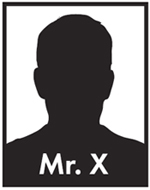 In the JFK film, Mr. X tells Jim Garrison: “The organizing principle of any society, Mr. Garrison, is for war. The authority of the state over its people resides in its war powers. Kennedy wanted to end the Cold War in his second term. He wanted to call off the moon race and cooperate with the Soviets. He signed a treaty to ban nuclear testing. He refused to invade Cuba in 1962. He set out to withdraw from Vietnam. But all that ended on the 22nd of November, 1963.”
In the JFK film, Mr. X tells Jim Garrison: “The organizing principle of any society, Mr. Garrison, is for war. The authority of the state over its people resides in its war powers. Kennedy wanted to end the Cold War in his second term. He wanted to call off the moon race and cooperate with the Soviets. He signed a treaty to ban nuclear testing. He refused to invade Cuba in 1962. He set out to withdraw from Vietnam. But all that ended on the 22nd of November, 1963.”
Jim Garrison: “I never realized Kennedy was so dangerous to the establishment. Is that why?”
X: “Well that’s the real question, isn’t it? Why? The how and the who is just scenery for the public. Oswald, Ruby, Cuba, the Mafia. Keeps ’em guessing like some kind of parlor game, prevents ’em from asking the most important question, why? Why was Kennedy killed? Who benefited? Who has the power to cover it up? Who?”
—————————————————————————————————————————————
The Secret Team:
The CIA and Its Allies in Control of the United States and the World
by L. Fletcher Prouty, Col., U.S. Air Force (Ret.), Prentiss-Hall, 1973, 1992, 1997
Ballantine, 1991
Skyhorse Publishing, 2008, 2011 (with foreword by Jesse Ventura)
The Secret Team: The CIA and Its Allies in Control of the United States and the World is a book by L. Fletcher Prouty, a former colonel in the US Air Force, first published in 1973. From 1955 to 1963 Prouty was the “Focal Point Officer” for contacts between the CIA and the Pentagon on matters relating to military support for “special operations” but he was not assigned to the CIA and was not bound by any oath of secrecy. It was one of the first tell-all books about the inner workings of the CIA and was an important influence on the Oliver Stone movie JFK. But the main thrust of the book is how the CIA started as a think tank to analyze intelligence gathered from military sources but has grown to the monster it has become. The CIA had no authority to run their own agents or to carry out covert operations but they quickly did both and much more. This book tells about things they actually did and a lot about how they operate.
In Prouty’s own words, from the 1997 edition of The Secret Team:
“This is the fundamental game of the Secret Team. They have this power because they control secrecy and secret intelligence and because they have the ability to take advantage of the most modern communications system in the world, of global transportation systems, of quantities of weapons of all kinds, and when needed, the full support of a world-wide U.S. military supporting base structure. They can use the finest intelligence system in the world, and most importantly, they have been able to operate under the canopy of an assumed, ever-present enemy called “Communism”. It will be interesting to see what “enemy” develops in the years ahead. It appears that “UFO’s and Aliens” are being primed to fulfill that role for the future. To top all of this, there is the fact that the CIA, itself, has assumed the right to generate and direct secret operations. ” – L. Fletcher Prouty, Alexandria, VA 1997
AUTHOR’S NOTE [to the 1997 edition] on suppression of publication and sales:
After I had given the manuscript of the original draft of this book to my editor at Prentice-Hall, in 1972; and had received the galley proof of the first edition back from him, he called me to suggest that I keep it in a safe place at all times. He told me that his home had been broken into the night before, and he suspected it was an attempt to steal his copy of that galley proof. He said, “They didn’t get it. It was under the seat of the Volkswagon.”
A few days later a nationwide release by the well-known Washington columnist, Jack Anderson, appeared across the country, “Book Bares CIA’s Dirty Tricks”. In that column, Anderson reported that the CIA had contacted a well-known bookstore in Washington and asked one of the employees to see if he could get a copy of the galley from me, and agreed to pay him $500, if he did. I agreed to meet him at my home that evening.
I suspected his call, but invited him anyway. In the meantime I set up a tape recorder in the umbrella stand near my front door and arranged for it to turn on when I switched on the overhead light on the front porch. With that arrangement, I recorded the whole visit including his final burst, “They promised me $500.00, if I got that galley proof.” I took that tape to Anderson, and it was the basis of his March 6, 1973 column. The underground attack didn’t quit there.
After excellent early sales of The Secret Team during which Prentice-Hall printed three editions of the book, and it had received more than 100 favorable reviews, I was invited to meet Ian Ballantine, the founder of Ballantine Books. He told me that he liked the book and would publish 100,000 copies in paperback as soon as he could complete the deal with Prentice-Hall. Soon there were 100,000 paperbacks in bookstores all around the country.
Then one day a business associate in Seattle called to tell me that the bookstore next to his office building had had a window full of books the day before, and none the day of his call. They claimed they had never had the book. I called other associates around the country. I got the same story from all over the country. The paperback had vanished. At the same time I learned that Mr. Ballantine had sold his company. I traveled to New York to visit the new “Ballantine Books” president. He professed to know nothing about me, and my book. That was the end of that surge of publication. For some unknown reason Prentice-Hall was out of my book also. It became an extinct species.
Coincidental to that, I received a letter from a Member of Parliament in Canberra, Australia, who wrote that he had been in England recently visiting in the home of a friend who was a Member of the British Parliament. While there, he discovered The Secret Team on a coffee table and during odd hours had begun to read it.
Upon return to Canberra he sent his clerk to get him a copy of the book. Not finding it in the stores, the clerk had gone to the Customs Office where he learned that 3,500 copies of The Secret Team had arrived, and on that same date had been purchased by a Colonel from the Royal Australian Army. The book was dead everywhere.
The campaign to kill the book was nationwide and world-wide. It was removed from the Library of Congress and from College libraries as letters I received attested all too frequently.
That was twenty years ago. Today I have been asked to rewrite the book and bring it up to date. Those who have the book speak highly of it, and those who do not have it have been asking for it. With that incentive, I have begun from page one to bring it up to date and to provide information that I have learned since my first manuscript.
In the beginning, this book was based upon my unusual experience in the Pentagon during 1955-1964 and the concept of the book itself was the outgrowth of a series of luncheon conversations, 1969-1970, with my friends Bob Myers, Publisher of the New Republic, Charlie Peters, founder of The Washington Monthly, and Ben Schemmer, editor and publisher of the Armed Forces Journal, and Derek Shearer. They were all experienced in the ways and games played in Washington, and they tagged my stories those of a “Secret Team“. This idea grew and was polished during many subsequent luncheons.
After my retirement from the Air Force, 1964, I moved from an office in the Joint Chiefs of Staff area of the Pentagon to become Manager of the Branch Bank on the Concourse of that great building. This was an interesting move for many reasons, not the least of which was that it kept me in business and social contact with many of the men I had met and worked with during my nine years of Air Force duties in that building. It kept me up-to-date with the old “fun-and-games” gang.
After graduating from the Graduate School of Banking, University of Wisconsin, I transfered to a bank in Washington where in the course of business I met Ben Schemmer. He needed a loan that would enable him to acquire the old Armed Forces Journal. During that business process I met two of Ben’s friends Bob Myers and Charlie Peters. We spent many most enjoyable business luncheons together. This is where “The Secret Team” emerged from a pattern of ideas to a manuscript.
As they heard my stories about my work with the CIA, and especially about the role of the military in support of the world-wide, clandestine operations of the CIA, they urged me to write about those fascinating nine years of a 23-year military career. During the Spring of 1970 I put an article together that we agreed to call “The Secret Team“, and Charlie Peters published it in the May 1970 issue of The Washington Monthly.
Before I had seen the published article myself, two editors of major publishers in New York called me and asked for appointments. I met with both, and agreed to accept the offer to write a book of the same name, and same concept of The Secret Team from Bram Cavin, Senior Editor with Prentice-Hall.
After all but finishing the manuscript, with my inexperienced typing of some 440 pages, I sat down to a Sunday breakfast on June 13, 1971 and saw the headlines of the New York Times with its publication of the “purloined” Pentagon Papers.[1] One of the first excerpts from those papers was a TOP SECRET document that I had worked on in late 1963. Then I found more of the same. With that, I knew that I could vastly improve what I had been writing by making use of that hoard of classified material that “Daniel Ellsberg had left on the doorstep of the Times” and other papers. Up until that time I had deliberately avoided the use of some of my old records and copies of highly classified documents. The publication of the Pentagon Papers changed all that. They were now in the public domain. I decided to call my editor and tell him what we had with the “Pentagon Papers” and to ask for more time to re-write my manuscript. He agreed without hesitation. From that time on I began my “Doctorate” course in, a) book publishing and, b) book annihilation.
As we see, by some time in 1975 The Secret Team was extinct; but unlike the dinosaur and others, it did not even leave its footprints in the sands of time. There may be some forty to fifty thousand copies on private book shelves. A letter from a professor informed me that his department had ordered more than forty of the books to be kept on the shelves of his university library for assignment purposes. At the start of the new school year his students reported that the books were not on the shelves and the registry cards were not in the master file. The librarians informed them that the book did not exist.
With that letter in mind, I dropped into the Library of Congress to see if The Secret Team was on the shelves where I had seen it earlier. It was not, and it was not even in that library’s master file. It is now an official non-book.
I was a writer whose book had been cancelled by a major publisher and a major paperback publisher under the persuasive hand of the CIA. Now, after more than twenty years the flames of censorship still sweep across the land. Despite that, here we go again with a new revised edition of The Secret Team.
_______
1. Any reader of the “Pentagon Papers” should be warned that although they were commissioned on June 17, 1967, by the Secretary of Defense as “the history of United States involvement in Vietnam from World War II [Sept 2, 1945] to the present” [1968], they are unreliable, inaccurate and marred by serious omissions. They are a contrived history, at best, even though they were written by a selected Task Force under Pentagon leadership.
—————————————————————————————————————————————
Excerpts from Chapter 1: The “Secret Team” – The Real Power Structure
The most remarkable development in the management of America’s relations with other countries during the quarter-century since the end of World War II has been the assumption of more and more control over military, financial and diplomatic operations at home and abroad by men whose activities are secret, whose budget is secret, whose very identities as often as not are secret – in short, by a Secret Team whose actions only those implicated in them are in a position to monitor and to understand.
The Secret Team (ST) being described herein consists of security-cleared individuals in and out of government who receive secret intelligence data gathered by the CIA and the National Security Agency (NSA) and who react to those data, when it seems appropriate to them, with paramilitary plans and activities, e.g. training and “advising” – a not exactly impenetrable euphemism for such things as leading into battle and actual combat.
The power of the Team derives from its vast intragovernmental undercover infrastructure and its direct relationship with great private industries, mutual funds and investment houses, universities, and the news media, including foreign and domestic publishing houses. The Secret Team has very close affiliations with elements of power in more than three-score foreign countries and is able when it chooses to topple governments, to create governments, and to influence governments almost anywhere in the world.
Whether or not the Secret Team had anything whatsoever to do with the deaths of Rafael Trujillo, Ngo Dinh Diem, Ngo Dinh Nhu, Dag Hammerskjold, John F. Kennedy, Robert F. Kennedy, Martin Luther King, and others may never be revealed, but what is known is that the power of the Team is enhanced by the “cult of the gun” and by its sometimes brutal and always arbitrary anti-Communist flag waving, even when real Communism had nothing to do with the matter at hand.
The Secret Team does not like criticism, investigation, or history and is always prone to see the world as divided into but two camps – “Them” and “Us”.
The Secret Team is not a clandestine super-planning-board or super-general-staff. But even more damaging to the coherent conduct of foreign and military affairs, it is a bewildering collection of semi-permanent or temporarily assembled action committees and networks that respond pretty much ad hoc to specific troubles and to flash-intelligence data inputs from various parts of the world, sometimes in ways that duplicate the activities of regular American missions, sometimes in ways that undermine those activities, and very often in ways that interfere with and muddle them. At no time did the powerful and deft hand of the Secret Team evidence more catalytic influence than in the events of those final ninety days of 1963, which the “Pentagon Papers” were supposed to have exposed.
The New York Times shocked the world on Sunday, June 13, 1971, with the publication of the first elements of the Pentagon Papers.[1] The first document the Times selected to print was a trip report on the situation in Saigon, credited to the Secretary of Defense, Robert S. McNamara, and dated December 21, 1963. This was the first such report on the situation in Indochina to be submitted to President Lyndon B. Johnson. It came less than thirty days after the assassination of President John F. Kennedy and less than sixty days after the assassinations of President Ngo Dinh Diem of South Vietnam and his brother and counselor Ngo Dinh Nhu.
This pivotal report was written in Washington by members of the ST. Although it contained a lot of updated material from Saigon (some of which had been transmitted to Saigon verbatim for the express purpose of having it then re-transmitted back to Washington for inclusion in the report – with the all-important Saigon dateline), one may be certain that this report contained a skillful mixture of what the President wanted to hear and what its authors in Washington wanted the President to read.
On the same day that the McNamara report was being handed to President Johnson, a former President was writing a totally different statement for the readership of the general pubic. President Harry S. Truman, observing the turn of events since the death of President Kennedy, and pondering developments since his Administration, wrote for the Washington Post a column also datelined December 21, 1963:
“For some time I have been disturbed by the way the CIA has been diverted from its original assignment. It has become an operational and at times a policy-making arm of the government… I never had any thought that when I set up the CIA that it would be injected into peacetime cloak-and-dagger operations. Some of the complications and embarrassment that I think we have experienced are in part attributable to the fact that this quiet intelligence arm of the President has been so removed from its intended role that it is being interpreted as a symbol of sinister and mysterious foreign intrigue and a subject for cold war enemy propaganda.”
Truman was disturbed by the events of the past ninety days, those ominous days of October, November, and December 1963. Men all over the world were disturbed by those events. Few men, however could have judged them with more wisdom and experience than Harry S. Truman, for it was he who, in late 1947, had signed unto law the National Security Act. This Act, in addition to establishing the Department of Defense (DOD) with a single Secretary at its head and with three equal and independent services – the Army, Navy, and Air Force – also provided for a National Security Council and the Central Intelligence Agency. And during those historic and sometimes tragic sixteen years since the Act had become law, he had witnessed changes that disturbed him, as he saw that the CIA “had been diverted” from the original assignment that he and the legislators who drafted the Act had so carefully planned.
The ST always fights for the minds, the time, and the attention of the top-echelon men. It moves fastest and most adroitly when others are off guard. This report of December 21, 1963, was absolutely crucial to the interests of the ST. Twenty-five years of driving, devoted work by ST members through a whole generation of critical events culminated in the Vietnam War. Never before in all the long history of civilization was a country to devote so much of its resources, its men and their lives, its money, and its very prestige in so strange an event as that which is called “The War in Vietnam”. It made the coups d’état in Guatemala and Iran, the rebellion in Indonesia, the escape of the Dalai Lama and the underground war in Tibet, the Bay of Pigs, and the wasting war in Laos all pale before its magnitude.
President Johnson, for all his experience and native ability, had not yet been singed by the fire of experience as had Jack Kennedy in Cuba or Eisenhower by the U-2. Johnson was a natural “wheeler dealer”, with courage and a flair for getting things done; but he had not yet learned how to say “No” and make it stick, rather, he had the inclination to defer the issue to a later day. This was the ideal formula for the ST, and they struck while the iron was hot.
There is another important factor to weigh in considering the agility and cunning of the ST. In bureaucratic Washington, few things are worth more than prior information. If a subordinate knows now what his boss is going to know tomorrow, he is in the same position that the gambler would like to be in if he knew which horse was going to win in a future race. The ST has set itself up through the use and control of intelligence data, both real and manufactured, to know now what its bosses are going to know later.
The ST seldom left anything to chance, and since they had the means of the “Connecticut Yankee in King Arthur’s Court”, they made it a way of life to use it.
Like the carbon rods in a nuclear reactor, to raise or lower the level of “radioactivity” or to heat up a latent insurgency situation to the level desired, this has been done in Laos for fifteen or more years. The policies that have been used in Indochina create and generate more combat than they quench. It has been said that the Vietnamese war is one of “re-counter”, the idea being that if you hit someone – even little, starving, terrorized, and homeless natives – long enough, they will eventually fight back with whatever bits of remaining strength they have.
In the inner chambers of the Government, where secret operations are cloaked in sufficient cover-story language to keep even the experts and top echelon leaders in a state of unreality, nothing ever more closely approached the “emperor’s new clothes” syndrome than did the ST’s work on Johnson, Rusk, McCone, and McNamara.
Brainwashing was the business of the ST in South Vietnam. No less than Robert McNamara, Robert Kennedy, Vice-President Johnson, and John McCone were thoroughly indoctrinated on South Vietnam by hardheaded experts who thought nothing of sharpening the scenarios skillfully drawn for consumption by top-level officials. Allen W. Dulles meant it when he called his book The Craft of Intelligence. To him and his inner ring of confidants and paramilitary experts, big-time intelligence was craftily managed. As a result, these carefully drawn reports told the President that things were getting much worse in Southeast Asia and that there was a strong possibility of a Communist take-over of all of South Asia if South Vietnam and Laos and then Cambodia succumbed to the insurgency which, the Team said, was running rampant there.
After the reports and briefings of December 1963 and January 1964, it became evident that Johnson was giving way before the pressures of the CIA and the “military” who were working with the Agency.
It is essential that the term “military” be clarified for use throughout this book. Many military men are regularly assigned to the CIA, in their primary roles as intelligence experts, for their own experience and training and to flesh out areas where the Agency can use them. These are legitimate military assignments, and such men are openly identified with the CIA. There is another group of military men who are fully assigned to the Agency, meaning their pay and allowances are reimbursed to the parent service by the CIA, but they appear to be with regular military units or other normal assignments so that their assignment to the CIA will not be revealed to those unwitting of their real task.
This strong military bias of the Agency plays a very important part in the operations of the ST. It probably played an impressive role in the winning of President Johnson’s mind soon after be took office. He no doubt, as did most others, looked to such men as General Maxwell Taylor, General Victor Krulak, General William Rosson, General Edward Lansdale, General William Peers, General Richard C. Stilwell, General William Dupuy, and many many others as straight-line military officers. Although without question they all were military men, they all also had assignments of various types that made them effective CIA operators. By the very nature of their work, they worked with, for, and in support of the CIA. It was their first allegiance. Those mentioned above form but a brief list of the great number of senior officers in this category.
This course was set by the winds of change as this Government responded to and reacted to various intelligence-data inputs from as far back as 1945. Vietnam was not so much a goal as it was a refuge and backlash of everything that had gone wrong in a quarter-century of clandestine activities. There can be no questioning the fact that Vietnam inherited some of the Korea leftovers; it inherited the Magsaysay team from the Philippines with its belief in another Robin-Hood-like Magsaysay in the person of Ngo Dinh Diem; it fell heir to the Indonesian shambles; it soaked up men and materials from the Tibetan campaign and from Laos in particular, and it inherited men and material, including a large number of specially modified aircraft, from the Bay of Pigs disaster. In its leadership it inherited men who had been in Greece in the late forties or during the Eisenhower era and who felt that they knew Communist insurgency when they saw it. The nation of South Vietnam had not existed as a nation before 1954 – rather it was another country’s piece of real estate. South Vietnam has never really been a nation. It has become the quagmire of things gone wrong during the past twenty-five years.
—————————————————————————————————————————————
Excerpts from Chapter 22 – Camelot: From the Bay of Pigs to Dallas, Texas
The Kennedy team had been together through a tough and long battle. Their operational procedures were honed and ready. When Kennedy wanted something done, he called upon one of his close friends, even upon one of his relatives, and after a brief discussion, they would go out and do what he had directed. This system can work in an operation such as the campaign had been, where the campaign team is the whole organization. However, in any organization as large and as immobile as the ponderous U.S. Government, this system is quite ineffective and leaves much undone and uncontrolled. It tends to leave tens of thousands of lesser bureaucrats on their own and to their own devices.
Almost immediately following the inauguration, the Secret Team saw that the door was wide open. With practically no National Security Council meetings, and therefore no Council to effectively control the CIA, there was no application of those crucial parts of the National Security Act of 1947 that require the NSC to direct the Agency. Without such direction and control, the CIA was practically free to act on its own.
Few men in the new Government had any idea of what was being put into shape for the Cuban invasion. Those who did, knew only bits and pieces of the whole plan. These men were not accustomed to the double-talk and undercover language and actions of the Agency. They heard briefings, but they did not know what they really meant. On the other hand, a large number of the new Kennedy team were old CIA hands. They did know exactly what was going on, and they used their special knowledge and experience to further isolate those who did not.
Under the cover of the Bay of Pigs operation, much bigger moves were being made. All over the world the Military Assistance training program (MAP) was picking up volume and momentum. Thousands of foreigners from all forty countries converged upon the United States for training and indoctrination. The new curriculum was either the one at Fort Bragg or like it. The Army interest in political-social-economic programs, under the general concept of “nation building”, was gaining momentum. For every class of foreigners who were trained and indoctrinated with these ideas, there were American instructors and American soldiers who were being brainwashed by the very fact that they were being trained to teach this new doctrine. A whole generation of the American Army has grown up with this and now believes, to one degree or another, that the…army is the chosen instrument in nation building. In many cases, due to the great emphasis the CIA placed on training the police forces of certain foreign countries, a large number of American servicemen who were used for such training became active in what was really police work and not the scope of regular military work.
It was the CIA, with help from a few other agencies, that put together the Inter-American Police Academy during the early Kennedy years, which played such an important part in emphasizing national police power in the nations of Latin America. The CIA brought in police instructors from all over the United States and from the military for this school. The success of this school, operating covertly from an Army base in the Panama Canal Zone, led to other schools in the United States that have carried on this type of work for police forces in this country. Part of the impetus behind the great buildup in the strength of police force all over the country dates back to this CIA police academy work and to the other schools it spawned. This police work not only involved training but it integrated new weapons, new procedures, and new techniques into American police work, some of which has been good and much of which has been quite ominous.
At the same time this training program was under way, larger and larger civic action teams and other benevolently named organizations spread throughout the world. Military Advisory and Assistance Group (MAAG) units were no longer small logistics and training organizations. They had grown to large size and were frequently augmented by large units on temporary duty in the host country… with many on the CIA payroll.
What had grown quietly, secretly, and almost totally unobserved within the infrastructure of the U.S. Government was by 1961 so large that it was time to bring it to life and give it some reason for existence. While Jack Kennedy and Bobby Kennedy were seriously pondering what had gone wrong with the Bay of Pigs operation, this new doctrine and new organization was emerging. It remained necessary, then, for the Kennedys to find the master key to all of this activity. It took the Bay of Pigs Board of Inquiry to perform this feat. The day-by-day litany of the Board was designed to indoctrinate Bobby Kennedy and to win him over to this new doctrine of counterinsurgency, flexible response, civic action, nation building, and the rest – and through him, to win over the President. While the Board was meeting day after day in the back room in the Pentagon, something more important than the fate of the Bay of Pigs was being discussed and elaborated upon. As witness after witness filed through the Board’s chambers, Bobby Kennedy sat there saying absolutely nothing, just soaking up the hearings and searching for cracks in the story. At the same time, Allen Dulles and Maxwell Taylor paraded a hand-picked group of disciples into the room for interviews and questioning. These men were selected to preach the doctrine of the new covert intervention. Their interviews were designed to train, indoctrinate, and – to use an overworked term – even to brainwash Bobby Kennedy. What he heard each day was the Maxwell Taylor new-military-plan-for-flexible-response theme, and topped off by Allen Dulles’s own theme of secret operations. Bobby Kennedy emerged from the incessant catechism of the “truths” ready to soak up the doctrine of counterinsurgency. This was to be the new watchword. The Kennedy Administration became hooked on counterinsurgency, and the indoctrination occurred to a good measure right there in the Board of Inquiry process.
Thus the inner Kennedy clan came out of the Bay of Pigs disaster with two strong convictions. Closely held and deeply felt was the conviction that the CIA had somehow done them in and that they had better be extremely wary of anything it did in the future. This was a very deep feeling and only seldom revealed in any official actions. In fact, Jack Kennedy developed a cover story of his own by giving the appearance as much as possible in public that he would go along with the CIA, when private actions and discussions tended to support otherwise.
The second conviction was that the world was being divided sharply into two strong camps in the battle between the “world of choice” and the “world of coercion”. It was President Kennedy who said to Chairman Khrushchev, “The great revolution in the history of man, past, present and future, is the revolution of those determined to be free.” The Dulles contribution to this philosophy was the reiteration of the Khrushchev challenge to support all wars of national liberation; and the Maxwell Taylor contribution was the simple reflex of the counterpuncher, the plan of flexible response. Defined in terms of the infantryman, this meant counterinsurgency.
One of the better definitions of counterinsurgency as practiced in the Kennedy era was that written by a general who worked for the Secretary of Defense: “… the technique of using, in appropriate combination, all elements of National Power in support of a friendly government which is in danger of being overthrown by an active Communist campaign designed to organize, mobilize and direct discontented elements of the local population against the government.” Although counterinsurgency has been generally regarded as a military activity, careful analysis will reveal that it is really more a civilian-controlled action in the paramilitary area of operation. In other words, the actions of this Government, which were called counterinsurgency, were not very different from the actions that were attributed to the Communists and called subversive insurgency. As a matter of fact, they seemed to be identical.
Note that the same material written by the spokesman for the Office of the Secretary of Defense continues as follows: “A successful counterinsurgency strategy requires, therefore, the integration of all U.S. Government activities in the country concerned, under the central leadership of the Ambassador or [if the local situation had deteriorated to the point where U.S. Armed Forces are actively involved] the military area commander. In the final analysis, the defeat of a Communist-led insurgency hinges largely on the effectiveness of the Country Team. This depends in great measure upon the willing cooperation of the government departments and agencies in Washington.”
We have a new doctrine at the Special Forces school, we have worldwide MAP training in the political-social-economic spheres, we have the new creed dramatically spelled out by the President’s Committee report and then, to tie this all together, we have the definition of counterinsurgency. The official doctrine of counterinsurgency states clearly that it is carried out “under the central leadership of the ambassador”. This means that counterinsurgency is intended to be civilian directed, even though it appears to be a military program, and that the senior man is to be the ambassador. He is placed in charge, not actually to be the country-team commander in chief, but to make it possible for him to delegate his authority to the CIA station chief rather than to some senior military officer.
This has shaped the total efforts of the United States in Vietnam. It had historically always been clear that when war was the only remaining means of accomplishing national objectives, the ambassador and his staff would leave the scene and the generals would take over. Now here was the highest echelon of military power in the United States stating publicly the new doctrine of the Kennedy era to the effect that counterinsurgency (a form of war) would be “under the central leadership of the ambassador”.
Why would a ranking U.S. Army general on a special assignment to the White House define the new training program for mutual security, and another ranking U.S. Army general on assignment to the Office of the Secretary of Defense define the new method of warfare designed to counter the Communist support of “wars of national liberation”, and both in terms of civilian direction of the military operations of U.S. forces? The answer is simple, although it has lain buried under the long years of the horrible disaster in Vietnam. Both of these men were closely affiliated with and had served with the CIA, and both were the type of men who make up the Secret Team. Even though they wear the uniform of the U.S. Army, their primary allegiance has been with the Secret Team/CIA new method of operations in peacetime. They saw that the time had come for the Secret Team to make its big move and for it to sweep out beyond the DOD and the CIA to form a massive paramilitary international power under paracivilian leadership and a monstrous cloak of security.
By the end of 1962 this nation had gone so far down the line following the Agency, the new Special Forces doctrine, the MAP, and the new U.S. philosophy as outlined in the President’s Committee report, that it was saying openly it was well on its way to carrying out as top national policy a major clandestine operation so big in fact that the entire government would be involved. Obviously, it could not be really clandestine in the sense that it would be kept secret from our enemies; on the contrary, it was a new kind of “clandestine”, so it would be kept secret from all Americans.
In 1963-1964, the ambassador could have been withdrawn in favor of the military commander as the escalation went into effect. Then the CIA chief should have been relegated to the Fourth Force role he should have in a wartime situation. As late as the end of 1963, every U.S. Army combat soldier in Vietnam (excepting a few assigned to such offices as the legitimate MAAG section – as differentiated from the oversized cover MAAG section) was under the operational control and direction of the CIA. It was only after the beginning of real escalation that the Army soldiers under Army generals began to take over certain roles and missions and areas in Vietnam. They never did take over full responsibility for what was called a “war”. One reason for this was that there never was a real honest to God military objective of this war. There never has been in Vietnam that objective, which when achieved by military force, would have spelled victory. When a nation is ready to demand from its people fifty-five thousand lives and more than $200 billion of its wealth as a contribution to some foreign action, it should at least have an objective that can be achieved in a tangible manner so that one can tell when it has been reached or when such attainment is beyond reach. What has happened in Vietnam is that the CIA got in over its head, and the Army was sent in to attempt to bring some order out of the chaos that existed there after the assassination of President Diem. Only then, when the Marines and the Army arrived, were troops serving under the actual command and direction of their generals.
One of the real reasons the Army got in there in the first place was because when the Marines came in they refused to take the field under the CIA. By that time, General Krulak, formerly the Special Assistant for Counterinsurgency and Special Activities on the Joint Staff, and then commanding general of Fleet Marine Forces, Pacific, knew too much about the CIA and its activities to permit his Marines to hit the beaches of Indochina under any command other than Marine and the U.S. Military Command, Vietnam.
Kennedy undoubtedly saw the beginnings of this serious problem after the Bay of Pigs investigation. At that time he wrote two very powerful National Security Action Memoranda, NSAM 55 and NSAM 57. Both were issued from the White House in June 1961. NSAM 55 was a brief memorandum of greatest significance, which was addressed directly to the Chairman of the JCS and was signed personally by the President. In essence it said that Jack Kennedy would hold the chairman (Lemnitzer) responsible for all action of a military nature during peacetime in the same manner as he would hold him responsible for such action in time of war. In other words, the President was saying that he wanted any and all peacetime operations (military type-clandestine, covert, paramilitary, etc.) to be under the control, or at least under the close scrutiny, of the chairman of the Joint Chiefs.
General Lemnitzer was a fine soldier of the old and traditional school and one of the best administrators to serve after World War II. As far as that old soldier was concerned, that memo meant there would be no more clandestine military operations in peacetime and that such things as Indonesia, Laos, Tibet, and the Bay of Pigs were a thing of the past.
I was the officer responsible for briefing this paper to General Lemnitzer and to the other Chiefs of Staff, and that NSAM rested in my files. There need be no misunderstanding about what the memo meant, what the President meant, what Lemnitzer understood and did, and what the other Chiefs of Staff understood.
This was an unusual memorandum because Kennedy sent it directly to the chairman and sent information copies only to McNamara, Rusk, and Allen Dulles. It should also be noted that Robert McNamara, Dean Rusk, and Allen Dulles knew that NSAM well and understood its full meaning and intent; and they knew exactly what President Kennedy meant by it. In other words, President Kennedy, by the explicit publication of this brief memo, was letting the entire top echelon superstructure above the Secret Team, wherever it existed, know that from that time on there were to be no more such ill-conceived, inadequately planned, and inherently dangerous clandestine operations. If this directive had been followed explicitly and if Kennedy had lived to assure that it was followed as he intended it to be, there is a very good chance that United States involvement in Indochina would never have been escalated beyond the military-adviser level.
The second memorandum, NSAM 57, though issued at the same time, was signed, as most NSAMs were, by a member of the NSC staff for the President. Coming as it did paired with NSAM 55 there could have been no misunderstanding that it carried the same thrust as NSAM 55, and that it fully expressed the views of President Kennedy. This memorandum was much longer, and it gave much more detail.
Following the policy of the National Security Act of 1947 and of such other directives as NSCID 10/2 and later NSCID 5412/2, it recognized that there might be requirements for clandestine activity from time to time. Then it went further than those earlier directives and became much more explicit. It said that any small and truly covert type of operation “may be assigned” to the CIA and that any which were larger would be the subject of special study and planning and then “may be assigned” to the military, that part of the military which would be sufficient only to carry out that one operation on a one time basis. It directed that large covert operations would not be assigned to the CIA.
The CIA argued that if it remained covert, regardless of size, no such transition of direction could take place. The whole point of the CIA argument was to invalidate the President’s controlling mechanism, which depended upon a scale of size.
After all the dust had settled, it began to appear that Kennedy’s directive had been turned into an encouragement to the CIA to go out and start small fires and count on the military to bail them out. This may seem an odd conclusion – almost funny – but it is exactly how we got into Vietnam in spite of the directives from the White House. The Secret Team is perfectly capable of turning a No into a Yes by its gift of irrepressible argument.
Recall how the trouble in Vietnam started. The CIA had been involved in a great number of brush fire operations there for a number of years in one way or another since the OSS days of 1945. These raged out of control, becoming a general conflagration by the end of 1963. At that time there were more than sixteen thousand American military personnel there, more or less in the ostensible role of advisory personnel; but all of these were under the actual direction of the country team, which meant that they were under the operational direction of the CIA.
Even ten years later and after the escalation of military manpower had reached the staggering figure of 550,000 men – to say nothing of gross amounts of civilian manpower – the central leadership was never transitioned to the military as President Kennedy’s NSAM 57 had ordered. If anyone ever wanted an example of how far the Secret Team can turn things around, this is one of the best. In June 1961 the President stated one thing categorically; by 1962 the Army’s spokesman (actually in Army uniform; but a CIA/Secret Team spokesman) had totally turned this around in his counterinsurgency doctrine and definition. Then, after President Kennedy died, the Secret Team retained control of most of the Vietnam War from its earliest birth pangs to the peak of escalation. Even the combat phase of the Vietnamese War, which is called “pacification” and which in fiscal year l972 cost more than $1 billion, was totally under the direction and control of the CIA.
The key to all of this, the matter that made it so easy for the Secret Team to wrest control of this major peacetime “covert” operation, even from the hands of the President and Commander in Chief, lay in the words of the Army general quoted above: “The JCS have recently established within the Joint Staff a special staff section dealing exclusively with the problem of counterinsurgency.” This was a carefully designed move, and it emerged from a formative series of events. Almost from the time of the creation of the CIA, the Secretary of Defense had maintained on his immediate staff an Assistant to the Secretary for Special Operations. Among other things, this man was charged with the responsibility for liaison with the CIA, NSA, Department of State, and the White House. His area of interest was almost totally within the field of clandestine operations, although he was interested in routine intelligence matters and other related functions. For the five or six years prior to the Kennedy inauguration, this office was filled by an extremely able and wise figure, a retired four-star Marine general, Graves B. Erskine. He had served in that capacity longer than any man had ever served in the office of the Secretary of Defense at such a level of responsibility. His tenure had covered service under Charles Wilson, Neil McElroy, Thomas Gates, and for a brief period, Robert McNamara. As he was utilized by the secretaries prior to McNamara, he kept a close eye on all CIA operational activity that involved the military in any way, and whenever in his judgment things were going too far he would inform the Secretary, and in most instances the CIA would be asked to drop its request for military support, which generally was tantamount to halting the project. Erskine’s role was one of considerable quiet power; yet he used it sparingly. Then shortly after U.S. Air Force Colonel Edward G. Lansdale came back from Saigon, where he had been working for the CIA ever since the establishment of the Diem regime and immediately before that had been in Manila during the selection and establishment of the Magsaysay regime, he was assigned to General Erskine’s office at the specific request of Allen Dulles. Along with a number of other CIA agent cover “plants” in the Office of the Secretary of Defense, Lansdale provided a strong counterfoil to his boss, General Erskine, within the military departments, where he was known, except to a few, only as an Air Force officer on the Secretary of Defense staff. (By 1961 the CIA, partly as a function of the vast U-2 project, was widely and deeply entrenched in the DOD.)
When McNamara became Secretary, he was advised that he really would not need an Assistant for Special Operations. He abolished that office. Then many of the old office staff were dispersed, especially in one sudden move the day after the failure of the Bay of Pigs operation. Those who were left moved to a new location in a new office, which was then headed by General (recently promoted) Lansdale. During this period, I had been assigned to the Erskine staff and was performing a rather special function, which I had been doing for about five years before in the Pentagon. My office was transferred from OSD to the Joint Staff, along with the necessary manpower spaces and authorization to staff the office with representatives of all services and administrative support. Then, as a progression of this first move, the Joint Staff created an office called the Special Assistant for Counterinsurgency and Special Activities (SACSA), and it brought with it a large staff of CIA oriented personnel from all services. It had several temporary special assistants, among them General Hemtges and General Craig, before it acquired its greatest and most dynamic driving force, U.S. Marine General Victor H. Krulak.
The important thing to understand is that the much-heralded office of SACSA had very few military responsibilities. It was almost entirely CIA oriented. For example, the great proportion of its dealing with the Army was strictly limited to Special Forces activity. With the Air Force it was for the most part limited to Special Air Warfare activity, and with the Navy it was active in the Sea, Air, Land (SEAL) teams. There were other duties of course; but most of them gave the office something it could say it was doing while it performed its primary task of supporting the CIA, the Secret Team, and of breathing life unto the massive Frankenstein called counterinsurgency.
SACSA played another very important role in the highest level policy discussions of this country. It has been said that Kennedy wanted to get out of Vietnam in 1963 but deferred it “until after his re-election”, as he told Senator Mike Mansfield, because such a move would stir up a “(Joe) McCarthy wave of sentiment” and would lose him the support of the JCS.
The JCS Kennedy knew best was the voice of SACSA. The one officer he saw from the Joint Staff more than any other during those crucial days was General Krulak. This was because Allen Dulles and Maxwell Taylor (at that time the military advisor to the President) opened the door for Krulak, since Krulak’s job was to “support the CIA”. General Krulak’s closest advisors were such men as Bill Bundy, a long-time career CIA man on McNamara’s staff at that time; General Lansdale, and other key CIA agents and high officials.
Later, when Maxwell Taylor had become the chairman of the JCS, the only JCS John Kennedy knew was even more CIA biased, since Maxwell Taylor himself was by that time more oriented toward the Secret Team than the military, and Krulak was closer than ever to the President.
Thus it was not the real military that Kennedy would have offended if he had withdrawn from Vietnam in 1963. It was the chameleon Secret Team/CIA military who made him think they would have objected, and who made him think that they represented the military.
As important to the Secret Team as SACSA was, of equal importance was the return to the government and especially to the Pentagon of Maxwell Taylor. After the Bay of Pigs, it was inevitable that Allen Dulles would leave the CIA. His chief lieutenant, Dick Bissell of U-2 fame and of Laos and Bay of Pigs infamy, left the Agency to become the head of the Institute of Defense Analysis, an organization with many interesting functions – among them, acting as a conduit for CIA activities. Dulles again showed that uncanny ability of his and of the Agency’s to rise above each fiasco on to new heights. During the Bay of Pigs inquiry he ingratiated Maxwell Taylor to the Kennedys so firmly that Jack Kennedy assigned General Taylor to the position of Military Adviser to the President. This was a good cover assignment for General Taylor. However, everyone else in the need-to-know clan knew that Maxwell Taylor was in the White House to be the President’s liaison man with the CIA. The President may not have known how closely Maxwell Taylor’s aspirations and those of Allen Dulles matched each other. During the last days of the Dulles era, Maxwell Taylor served as the focal point man between Dulles and his Agency and the White House.
Maxwell Taylor had quit the Army in a dispute with the Eisenhower Administration and now he was in an ideal position to encourage with all support and haste the urgent development of the new flexible response army, attuned to the trumpet of Taylor’s own choosing – counter-insurgency. All the pieces were coming together, and during this formative period a new special group was formed. This was the Special Group (of the NSC), Counterinsurgency, better known as the Special Group CI, or CI. This group presided over the CIA, State and Defense Departments, and others, who hastily put together a list of counterinsurgency nations. It was a watch list, which varied from time to time as intelligence inputs rose and fell with the tides of international events. The Special Group CI list usually ran to about sixteen or seventeen countries, in the order of how deep they were along the path to insurgency and decay. It is worth noting that although the automatic target of CI was Communism, not a single “Communist” country, including Cuba, was on the list. It was characteristic of the new Secret Team focus that the United States was to intervene in the affairs of its friends and not in the affairs of Russia’s friends or of China’s friends.
As countries were added to the list their military aid programs were hastily escalated, and literally hundreds and sometimes thousands of American military personnel of all types descended upon them. Sometimes they arrived in uniform and sometimes in civilian disguise. They went to work immediately in support of the new political-social-economic doctrine, and before long new schools were being built – by the army; new hospitals were being built – by the army; new farming techniques were under way – by the army; irrigation and water purification projects were under way – again by the army. Underlying all of the paramilitary and sometimes real military work was the CIA, working with the host government to weed out, to identify, and to categorize all of the subversive insurgents. In countries where the word Communism had never been applied to bandits, beggars, and rebels before, all of a sudden all opposition was given the name “Communist”. All the problems were attributed to Communists, and the counterinsurgency action was under way.
Thus, all of these pressures and behind-the-scenes efforts piled up before Vietnam, and came to a head in Vietnam. As we have said before, the logistics equipment in huge amounts from Indonesia, Tibet, Laos, the Bay of Pigs, and many other operations all began to accumulate in Vietnam along with the Secret Team personnel, who saw an opportunity to accomplish, almost with abandon, all of the things that they had failed to do or had been unable to do before.
While this was going on quietly and quite subtly before his eyes, President Kennedy did a lot of talking with many old hands about “what has gone wrong with the Bay of Pigs” and “what is the meaning of Vietnam”. One of Kennedy’s closest friends, Kenny O’Donnell, reports that General MacArthur had “stunned” the President in 1961, after the Bay of Pigs, with his warnings about the folly of trying to match Asian manpower and about the absurdity of the domino theory “in a nuclear age”. O’Donnell further reports, “The General implored the President to avoid a U.S. military buildup in Vietnam, or any other part of the Asian mainland…” And Mary McGrory, a reporter, has said, in words more truthful and important than she knew, “President Kennedy, who at the time was caught up in the counterinsurgency mania which had swept the New Frontier, was subsequently startled by the passionate objections of Mansfield. But he told Mansfield privately, after a White House leadership meeting, that he agreed with him “on a need for a complete withdrawal from Vietnam, but I can’t do it until 1965 after I get re-elected”.
Kennedy had the misfortune, which he was overcoming rapidly, of being young and inexperienced in the inner ways of government, such as those employed by the Secret Team. He could not have realized that Maxwell Taylor, for example, by the time he had returned to the Pentagon as chairman of the JCS, was actually more of a Judas goat, as far as the military was concerned, than the leader of the herd, as he had been when he left three years before. Few great armies have been so vastly demoralized and stricken by an integral campaign as has the U.S. Army since those dark days of 1964 and 1965, when Maxwell Taylor and his Secret Team counterparts led them into Vietnam under the banner of counterinsurgency.
Vietnam is not a simple thing. Businesses that had been all but knocked out of the defense contract arena by the end of the Eisenhower regime – some by the sudden and abrupt swing to ballistic missiles and space during the late fifties – saw new light at the end of the tunnel in the resurgence of the foot-soldier army and the ground warfare this new dogma presaged. They could expect to go back to making World War II type munitions again and dumping them on the shores of Asia. Perhaps the strongest support for the Vietnamese war has always come from the national defense industries, which benefited tremendously by this windfall. The helicopter industry, which was on the ropes in 1958-59, became a major supplier of war material for Vietnam. At the beginning of the war in Vietnam, the Air Force had very few aircraft that could carry a respectable tonnage of bombs – not because the planes could not carry the load, but because they had all been designed to carry nuclear weapons. As the war became a bombing war – what McNamara called the “sophisticated war of the North” – all of these huge bombers had to be refitted to carry conventional bombs, and the huge munitions industry put back to work manufacturing bombs. There were many periods in the early days of the bombing when the Air Force actually ran out of bombs while the industry was getting out its old tooling and delivering World War II weapons again.
This war halfway around the world was a major bonanza for the transportation industry and especially for the air transportation groups. During peak years, the DOD was spending three quarters of a billion dollars on charter airlift for Vietnam alone.
In the services, military personnel who saw forced retirement facing them during the sixties were looking at a whole new vista with the new plan and its return to a ground war of massive troop strength. There were so many diverse interests, which all came together in the springtide of Vietnam and grew and grew from under a cloak of classification and secrecy.
Few people realized how some of these operations got started, and how important some of these seemingly small things were in the escalation of Vietnam. The Agency brought a squadron of helicopters down from Laos, and immediately these complicated machines needed a great number of skilled men to support them; then these vast agglomerations of men and machines created their own requirements for additional men to protect them and to feed, house, and support them. The first helicopters came in under the wraps of secrecy. No one seemed to know how they got there; but once they were there the great logistics tail that was essential to keep them operating had to be built in the open, without classification. It could not have been kept secret, even if anyone had tried.
On top of this, since the Secret Team was running the beginnings of the war from Washington, they felt that every gimmick they could dream up was worth a try. Even before the escalation, this plan to build up the action in Vietnam was foreshadowed and preordained by official military-type Secret Team doctrine, which stated: “These natural advantages [of the guerrilla] can be largely neutralized by the imaginative employment of modern technological advances which military research and development have been perfecting since the last war… night vision devices, lightweight body armor, portable radar for infantry use, invisible phosphorescent dyes, defoliants to deprive the guerrillas of their jungle cover; fast lightweight, silent, shallowdraft boats for river patrol, and tiny reliable short-range radios… Practical uses for all these new developments can best be found by establishing combat development and test centers in the country where the counterinsurgency campaign is being waged.”
Such centers were set up later in Vietnam and proved to be the modern counterpart of the horn of plenty and the runaway Connecticut Yankee in King Arthur’s Court. The center in Saigon was given the highest priority to send daily messages to the Pentagon, and from there every single request, large and small, important or unimportant, was given a high priority to be carried out, all on the assumption that each and every request of the CDTC (Combat Development Test Center) would help win the war of counterinsurgency. The floodgates were open for the zealots, the irresponsible, and the special interests. Such things make small wars grow fast.
The CIA was the first in Vietnam with helicopters. It introduced the M-16 rifle there, and it brought into Indochina the B-26 bombers left over from Cuba and Indonesia and the T-28 trainer aircraft modified as a ground-attack plane. It had the first L-28 utility aircraft, and it brought in the old C-46, C-47 and C-54 aircraft of World War II vintage. It introduced many new ships, such as the Coast Guard patrol ships and the Norwegian-built PT boats. It used the U-2 and had the use of the product of the RF-105 reconnaissance planes. Many of the battlefield tactics used later by the army were first used in the field by the CIA.
By the middle of 1963 it had become evident that either the President was going to have to step in and put a halt to the spread of this counterinsurgency conflagration or it would consume the country. Everywhere the young Kennedy team turned, they came up against CIA and Secret Team specialists. With the sage and powerful General Erskine gone from the staff of the Secretary of Defense, his replacement in this type of activity was either Bill Bundy, a long-time CIA man; Ed Lansdale, a long-time CIA man also, or others too numerous to mention and so well concealed (such as those who really sent the U-2 out on that fateful May 1 mission) that the unaware McNamara had no defense against their continuing pressures. Even in the office that he thought would give him some buffer between the Agency and the military – that special office in the Joint Staff – SACSA, McNamara was getting almost 100 percent CIA action, and when Maxwell Taylor became Chairman even his efforts were expended more in support of the Secret Team, as he saw it, than in regular line military.
Top military men who had known Taylor for years, had seen him leave the Army in a huff and had watched him return to the White House, where he cast his lot with the CIA and the Secret Team. They knew that even though he was among them officially as the chairman, he was no longer one of them. He was leading the Army and certain elements of the Navy and Air Force away from their traditional roles and into an opportunistic and uncertain future with the CIA and the Secret Team – into the orgy of Vietnam.
We have seen earlier that President Kennedy’s directive, NSAM 57, which laid out the ground rules for covert operations and broke them down on the basis that very small was for CIA and the larger ones must be reviewed and probably assigned to the military, had been so turned around that it had become, in practice, almost meaningless on the intangible issue of when to transition from the CIA to the military. To demonstrate how totally this directive has been circumvented, we should note that there has never been a transition in Saigon, even when the force strength stood at 550,000 men.
We have not seen what had happened to NSAM 55, the memo Kennedy had sent directly to General Lemnitzer. The General filed that memo and used its silent power to assure that the military would not become involved in covert operations. When Maxwell Taylor became the chairman, he inherited this power. Whereas the President had called upon the chairman of the JCS to advise him in peacetime as he would in wartime, now he had appointed an adviser who was with the other side. The CIA knew that Taylor would not advise against them any more than Lansdale and Bundy would, up in McNamara’s office.
Therefore, with the move of Maxwell Taylor to the chairmanship of the JCS, the Secret Team had checkmated President Kennedy on both NSAM 55 and NSAM 57. As the country moved into the crucial summer of 1963 the President admitted to his closest confidants that he could not move against the right-wingers and the Secret Team. As he told Senator Mansfield, “I can’t do it until 1965, after I’m re-elected.” And as he told Kenny O’Donnell, “In 1965, I’ll be damned everywhere as a Communist appeaser. But I don’t care. If I tried to pull out completely now, we would have another Joe McCarthy Red scare on our hands.” Then in a broadcast on Sept. 2, 1963, President Kennedy gave a hint of his plans for disengagement when he said, speaking of the Vietnamese, “In the final analysis it is their war. They have to win or lose it.”
As we look back to the beginning of this narrative and to those remarkable papers called, quite incorrectly, the Pentagon Papers we recall that early in October 1963, only one month after the above cited broadcast, McNamara and Maxwell Taylor reported to the President that it looked to them, after their visit to Saigon, as though things could be put under control and that we would be able to withdraw all personnel by the end of 1965. Now we can see why they chose that date. This was the date the President had used in his own discussions with his closest advisers. They all knew that he planned to announce a pullout once he had been re-elected. Less than one month after that report, the men who had been running South Vietnam since they had been placed in power there by the American CIA, along with Ngo Dinh Diem and his brother Nhu, were dead, and the government had been turned over to one of the friendly generals who more properly fit the pattern for counterinsurgency and the new plan. If South Vietnam was to be redeemed it would best be saved by a junta of benevolent army generals – or so the new military doctrine went.
Less than one month after that date, President Kennedy himself had been shot dead in Dallas. And what is even more portentous, it was less than one month after that tragic date that the same two travelers, McNamara and Taylor, returned again from Saigon and reported to a new President that conditions were bad in South Vietnam and we would have to make a major effort, including American combat troops and a vast “sophisticated” clandestine program, against the North Vietnamese.
The Secret Team struck quickly. While the echoes of those shots in Dallas were still ringing, the Secret Team moved to take over the whole direction of the war and to dominate the activity of the United States of America.
In the face of these shocking and terrifying events, who could have expected a man who had been in the range of gunfire that ended the life of his predecessor, to make any moves in those critical days that would indicate he was not going to go along with the pressures which had surfaced so violently in Dallas? He knew exactly what had happened there in Dallas. He did not need to wait for the findings of the Warren Commission. He already knew that the death of Lee Harvey Oswald would never bring any relief to him or to his successors.
—————————————————————————————————————————————
Full text of The Secret Team is available here.
—————————————————————————————————————————————
 by Robert Riversong: may be reproduced with attribution for non-commercial purposes.
by Robert Riversong: may be reproduced with attribution for non-commercial purposes.
Go to Turning the Tide HOME (bottom of page) for more articles on the JFK Assassination.

